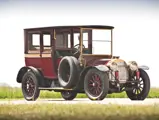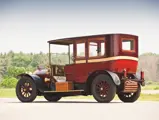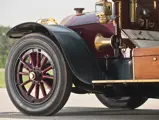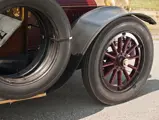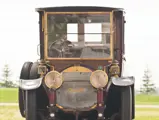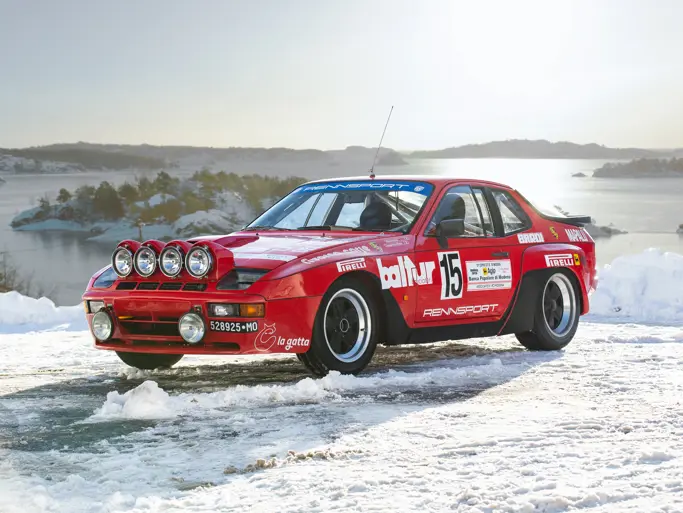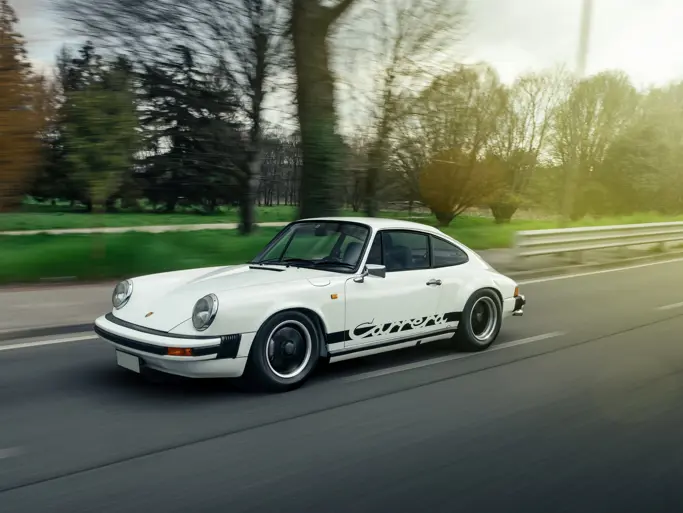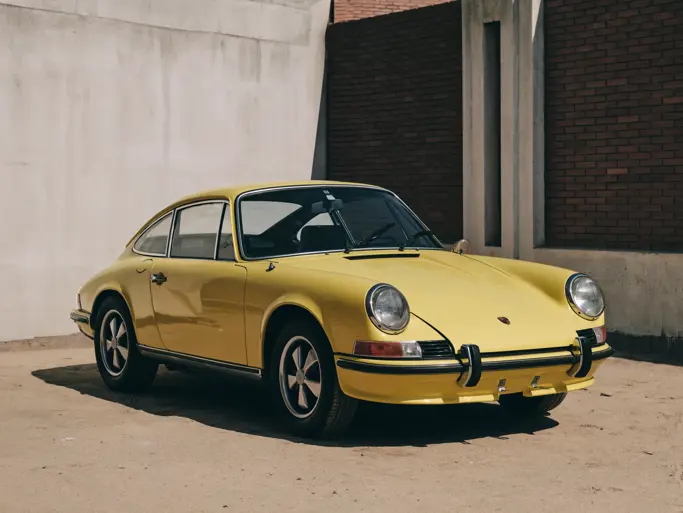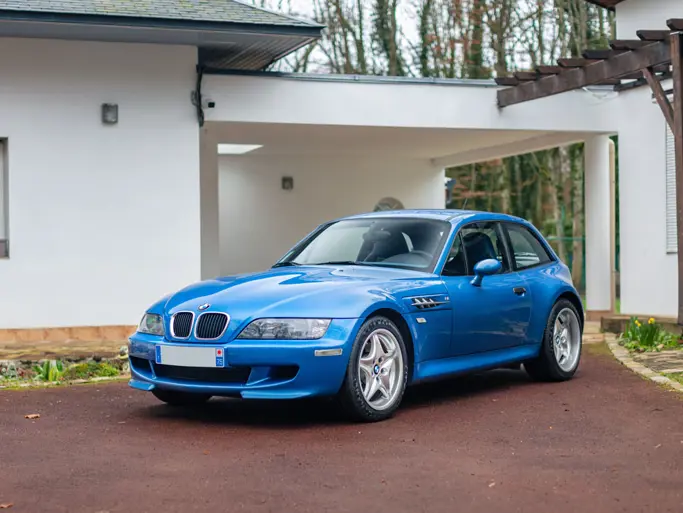Hershey 2011
1912 Mercedes 28/50 PS Town Car by Brewster & Co.
{{lr.item.text}}
$253,000 USD | Sold
 | Hershey, Pennsylvania
| Hershey, Pennsylvania
{{internetCurrentBid}}
{{internetTimeLeft}}

50 hp, 7,240 cc T-head inline four-cylinder engine (cast in pairs), four-speed manual transmission, shaft drive, rigid front and rear axles with semi-elliptic leaf springs, and foot-activated, water-cooled driveshaft brake. Wheelbase: 135"
- Formal town car coachwork
- Highly original condition
- Very rare early Mercedes motor car, formerly owned by Charlie Stitch and Alex Ulmann
German-built, bodied in America and named for the daughter of an Austrian-born French auto dealer, this Mercedes is as cosmopolitan as they come, even before its recent world travels.
Gottlieb Daimler was a talented but conservative engineer, his financial partners more conservative still. The backers felt their new company, Daimler Motoren Gesellschaft, should concentrate on stationary engines. However, Daimler and his colleague Wilhelm Maybach continued experimenting with automobiles and by 1895 were able to put several models into production. They had five different engines, each available with several types of bodies, but none of them could reasonably be called “sporting.”
Enter Emile Jellinek, an Austrian-born entrepreneur and Daimler agent who delighted in racing cars and lent much to the company’s development. Having raced a Daimler in the 1900 Nice Automobile Week, Jellinek came away disappointed and wanted a faster car. He badgered the factory to build him what could be called an early muscle car, a light chassis powered by a 35-horsepower engine. In order to provide incentive to the company, he undertook to order 36 such cars if he were given the exclusive sales franchise for Austro-Hungary, France, Belgium and America—and further that the cars be named for his eleven-year-old daughter Mercedes. It was a deal that Daimler Motoren Gesellschaft decided not to refuse.
Mercedes cars were of front-engine, chain-drive design, a concept adopted at the insistence of Jellinek, and were powerful, with engines of six to nine liters giving 40 to 60 Pferdestärke (German horsepower, literally “horse strength” and abbreviated PS), although smaller 1,760 cc, 8 PS cars were available. In 1905, the 15/20 PS became the first Mercedes to use shaft drive, an architecture that gained wider use across the range, although the large sporting cars continued to use chains. These sports models were made in sizes to 100 PS. The Daimler factory scored big in 1908 when Christian Lautenschlager won the French Grand Prix in a new 140-horsepower Mercedes.
Mercedes cars were equally suitable for the boulevard. By 1908, several European heads of state had adopted them for official travel. These included Kaiser Wilhelm II and King Leopold of Belgium. England’s Edward VII used British Daimlers at home but kept a Mercedes for his Continental journeys.
America had been an important market from the time that Jellinek obtained his distributorship. By 1904, a quarter of Mercedes production went there, a territory so successful that a plant was established that year at Long Island City, New York. Prominent customers included the Astors and Vanderbilts, Henry Clay Frick and Isaac Guggenheim. However, U.S. production ceased after a factory fire in 1907. This car postdates the demise of the American factory, so it was likely imported in chassis form and delivered to the Long Island City facility of Brewster & Co. for the fitting of a town car body.
While it has been suggested that the original customer for this car was none other than John Jacob Astor IV (who lost his life on the Titanic in 1912), this aspect of the car’s provenance remains the subject of conjecture. According to information provided by Mercedes-Benz Classic in Germany, this long-wheelbase car is a 1912 model, and it was delivered as a bare chassis to London, England in 1913. While the car is missing its chassis plate, the engine number is 16081. Following its stay in England, the car was delivered to New York City in 1914, at which point it seems to have been fitted with Brewster coachwork in the formal town car style.
It is known that Alec Ulmann, a Russian-born, MIT-educated aeronautical engineer, bought the Town Car in 1937. Ulmann, known for organizing the 12 Hours of Sebring races, was an active car collector and early member of the Veteran Motor Car Club of America. In his care, this Mercedes was a regular fixture on VMCCA tours.
The next owner was Charlie Stitch, a skilled mechanic who ran a garage on the fifth floor of a building on Manhattan’s 64th Street. Stitch was, in the words of one of his friends, “revered as a Mercedes authority by enthusiasts of the marque” and regularly held court at his place of business. Having worked for Daimler-Benz in Germany, he had a deep knowledge of the marque’s early products and had accumulated a vast stock of parts. His clients included many prominent collectors, Briggs Cunningham among them.
In 1991, a noted Japanese collector purchased the car. It returned to the United States six years later and then went abroad again, to Automuseum Deventer in the Netherlands. It participated in the 2000 Concours d’Elegance Paleis Het Loo at Apeldoorn prior to acquisition by noted Massachusetts collector Howard Fafard, who owned the car for a number of years.
Today, it is truly remarkable in its preservation. The upholstery is original, as are the leather wings, a Brewster hallmark. The body and paint show certain stress cracks, demonstrating restoration that was performed some time ago. The period Westinghouse air shock absorbers are an Americanism substantiating its frequent road use in the distant past. Ulmann’s contemporaries remember the car in this color and general condition, so it likely has remained untouched for more than 50 years. It is very presentable and could easily be enjoyed as it is.
Increasingly, collectors are recognizing that some classic cars are “too good to restore,” particularly when they are accompanied by fascinating provenance. The new owner of this extraordinary Mercedes will have a great opportunity either to preserve this car or to restore it to show-quality condition. Regardless of its future, the possibilities for touring and showing are virtually endless.

